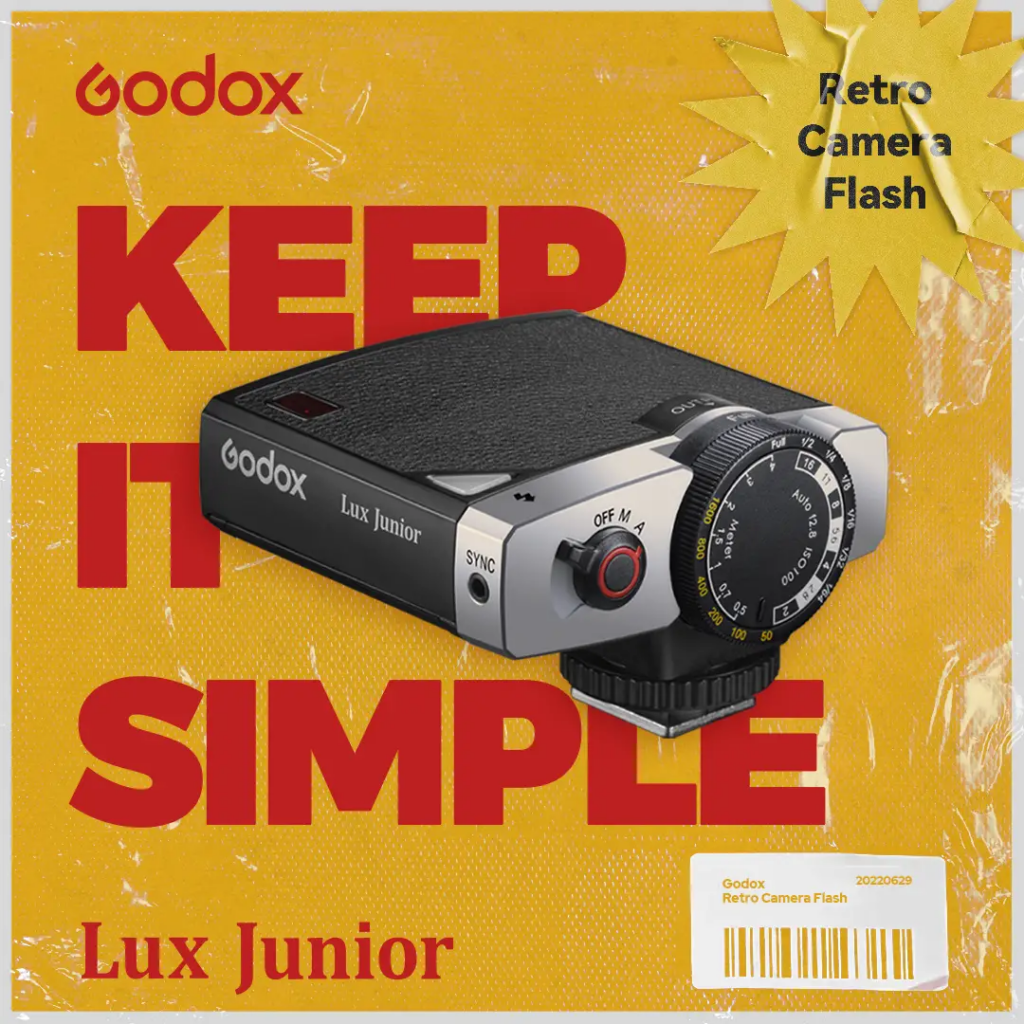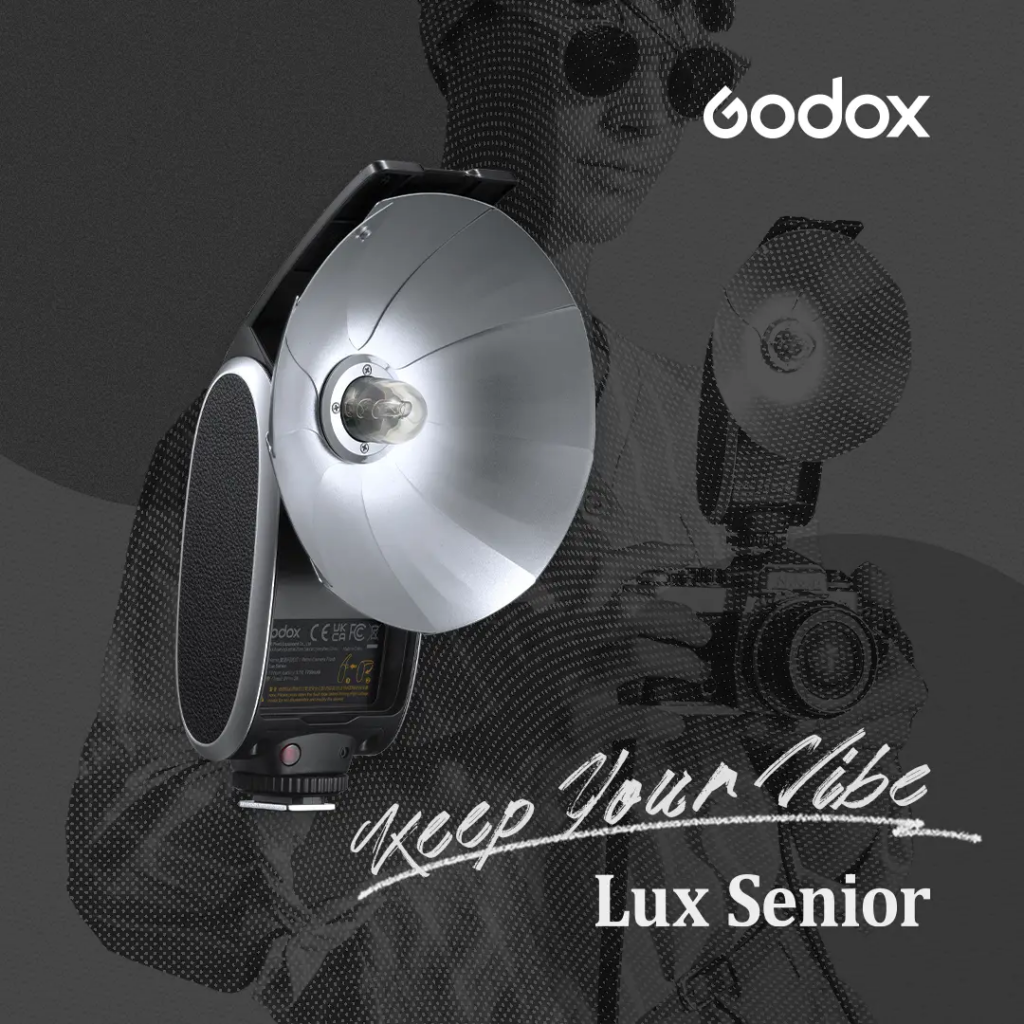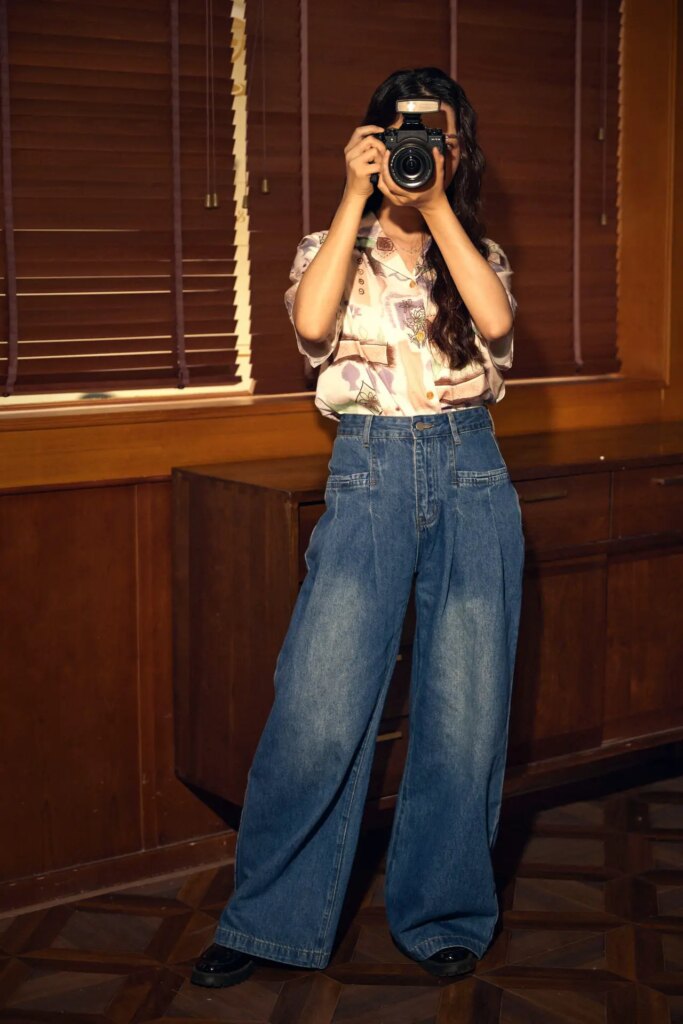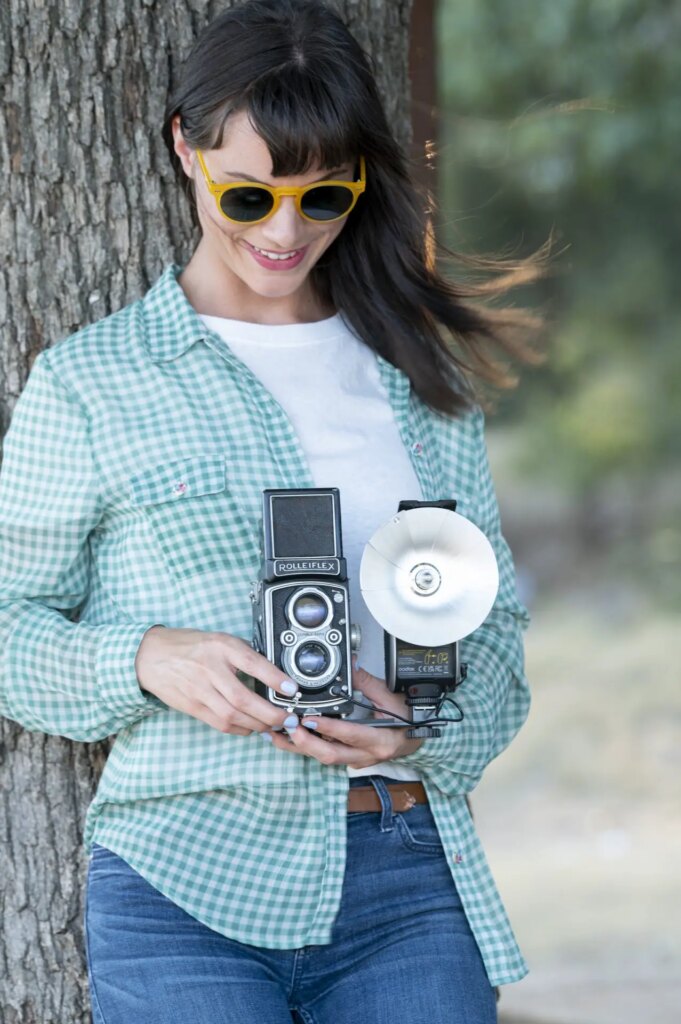(Since publishing this news article, we have since reviewed these flashes here)
Godox has released two retro-looking on-camera flashes which can be used with both film and digital cameras. The portable vintage silver and black designs are a nod from the lighting equipment company to a time gone past, one that is often looked back at with nostalgic longing.
Of course, we know that this time is not past, but rather being strongly adapted into the present. Film photography popularity has picked up in the mainstream in recent years. There is also the surge forward with mirrorless digital in the new camera market. Godox has created something that fits well with these directions consumers are looking towards.


Easy Mode and Hard Mode
The flashes are very simple and only have two modes of operation, A and M. A is easy mode and M is hard mode as Godox describes it on their product page. It is similar to auto mode for your camera. The Godox flashes can be put in A mode leaving photographers to focus on taking pictures rather than adjusting settings manually. On the flip side, M mode allows users to be in total control and adjust the settings to what they prefer.
Both the Lux Junior and Lux Senior have 7 levels of flash power, going from 1/1 to 1/64. They also have optical control settings, a sync port, and fixed value focal length of 28mm.
One difference between the two, aside from size and design, is the battery. The Lux Junior is powered by an AAA alkaline battery and the Lux Senior features a rechargeable lithium battery.


Hybrid Compatability
Both flashes are compatible with Fujifilm, Canon, Nikon, Olympus, and Sony digital cameras. Much of their campaign imagery shows the flash being used with these brands, especially with their mirrorless models. The flash can also be used with film cameras and was styled to match with the classic silver and black look which never seemed to go out of trend.
Godox says, ‘As a tribute to the timeless aesthetics that transcends time, Lux Junior presents the pure classic design and function to explore the essence of photography along with you and turn your nostalgia into tangible beauty.’ (source: Godox)
On the Lux Senior, Godox adds, ‘Folded, it’s like another phone you take with. Unfolded, it will be the time machine taking you to travel along the history of photography and to meet the great photographers in the glorious age.’ (source: Godox)

Small & Simple
Weighing in at 130 grams, the Lux Junior won’t add much to a photographer’s on-the-go setup. Godox markets this as a product that will keep things simple, ‘Lux Junior is all about the pure enjoyment and excitement of taking every shot. Let’s keep things simple and go rogue. Forget about the rule or the standard, just click the shutter and enjoy the moment.’ (source: Godox)
The marketing campaign doesn’t include street photographers in the imagery, but I instantly see the well matched pairing. A small portable flash that looks retro would pair extremely well with the small, often retro-looking, cameras that many street photographers favor, film and digital alike.
Not much heavier, the Lux Senior weighs in at 227 grams. This flash features a folding design so when not in use, it packs down quite well.
I enjoy using Godox products, like the AD200, as they make it very easy to set up and understand straight away. It doesn’t take long to charge up, turn on, and sync before the flashes are ready to go. They also simply work without fussing about. It is exciting to see them creating products that involve analogue photography and cameras as well as digital and can be used by anyone wanting a small setup. The powerful portable cross-functional hybrids that pack a punch are anything but cute.
To find more information about the Lux Junior, head over to Godox’s dedicated page here. For Lux Senior info, visit this page here.
Images provided by Godox and used with permission.
Share this post:









Comments
Don Goodman-Wilson on Godox Getting in the Retro Game with the New Lux Junior & Senior Flashes
Comment posted: 19/07/2022
Comment posted: 19/07/2022
Terry B on Godox Getting in the Retro Game with the New Lux Junior & Senior Flashes
Comment posted: 19/07/2022
What surprises me is that flash units presumably intended for those with little to no flash photography knowledge and for whom would likely require more auto features, to get the most from these units they must be used in manual mode which is, frankly, ridiculous.
As these units are intended to be used with both film and digital cameras this could be an advantage as the trigger voltage will/should be low so as to not fry a digital camera's electronics and the units will, I assume, also happily work with film cameras. But Godox's omission of some camera brands from its list, such as Minolta, Pentax, Leica, Yashica, to name just four, does make me wonder how universally compatible the units will be with a swath of film cameras. Or is Godox simply being over cautious?
Comment posted: 19/07/2022
Comment posted: 19/07/2022
Comment posted: 19/07/2022
Comment posted: 19/07/2022
Comment posted: 19/07/2022
Comment posted: 19/07/2022
Matthew Bigwood on Godox Getting in the Retro Game with the New Lux Junior & Senior Flashes
Comment posted: 19/07/2022
Johan on Godox Getting in the Retro Game with the New Lux Junior & Senior Flashes
Comment posted: 19/07/2022
Sroyon on Godox Getting in the Retro Game with the New Lux Junior & Senior Flashes
Comment posted: 08/08/2022
To address some of your points... I haven't used a Metz, but I looked up the manual for your model before I wrote my comment. I accept that it may not have been conventional when it was released, but I meant conventional by current (2022) standards. Features like automated exposure, adjustable power, zoom, built-in diffuser, etc. are all present even on my Godox TT600, which is an entry-level model. In fact the TT600 even has a built-in radio transceiver to boot. Unlike the Metz it doesn't have a modelling light, but the higher-end Godox flashes do.
A diffuser is not the same thing as the beauty-dish style reflector that the Lux Senior has. My Godox and Canon Speedlites have diffusers too. I had a phase when I was very much into light modifiers, so I've also compared other types of diffusers including sock-style diffusers and Magsphere-style omnidirectional diffusers. The quality and shape of light are different (happy to go into more detail on how and why, if anyone is interested).
I've used a Vivitar 285, my father has one including the remote sensor; it's the flash I learned flash photography on. I know that it can be tilted up for bounce, what I'm saying is that thyristor automation does not work natively when used with bounce, or with light-modifiers which block direct line of sight. As you pointed out we need additional accessories. And if we're talking about additional accessories, Godox has any number of them, many of which (e.g. radio receivers, light modifiers) are compatible with the Lux Senior. More importantly, Godox has many flash models with the capabilities you're describing, and much more: zoom, adjustable flash power, tilt, swivel, bounce, TTL, optical receiver, radio transceiver, you name it. But the Lux Senior is a different design, with a different user-base in mind. This is the whole point of having a "range", no? Most brands have it; different strokes for different folks. So I'm not saying that these retro flashes are for you; in fact, all indications point to the contrary. All I'm saying is that they are not – in my opinion – woeful, ridiculous, only for the gullible, etc. Anyway as I said, I'll review these flashes in the coming weeks, and maybe we can continue the conversation then :)
Cameron on Godox Getting in the Retro Game with the New Lux Junior & Senior Flashes
Comment posted: 01/12/2022
Comment posted: 01/12/2022